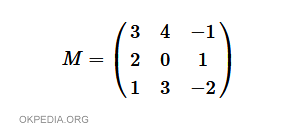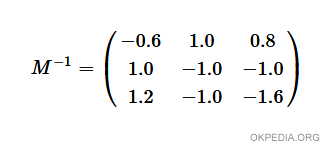How to find an inverse matrix in Python
To calculate the inverse matrix in Python, use the linalg.inv() function of the numpy module.
linalg.inv(x)
The parameter x of the function is a square invertible matrix M defined with the function array() of numpy.
The function outputs the inverse matrix M-1 of the matrix M.
What is the inverse matrix? The inverse matrix M-1 of a square matrix M is another square matrix, such that the product M · M-1 is equal to an identity matrix I.

Example
Given the following invertible matrix M, find the inverse matrix M-1.

Import the numpy module in Python
>>> import numpy as np
Now, define the input matrix using the array() function.
>>> m=np.array([[3,4,-1],[2,0,1],[1,3,-2]])
Calculate the inverse matrix with the function linalg.inv().
>>> np.linalg.inv(m)
The function calculates and outputs the inverse matrix
>>> array([[-0.6, 1. , 0.8],
[ 1. , -1. , -1. ],
[ 1.2, -1. , -1.6]])
The inverse output matrix is also an array() object. It can be read as a list.
The elements of the inverse matrix are real numbers.

Verification. The product of the matrix M for the matrix M-1 is an identity matrix.

